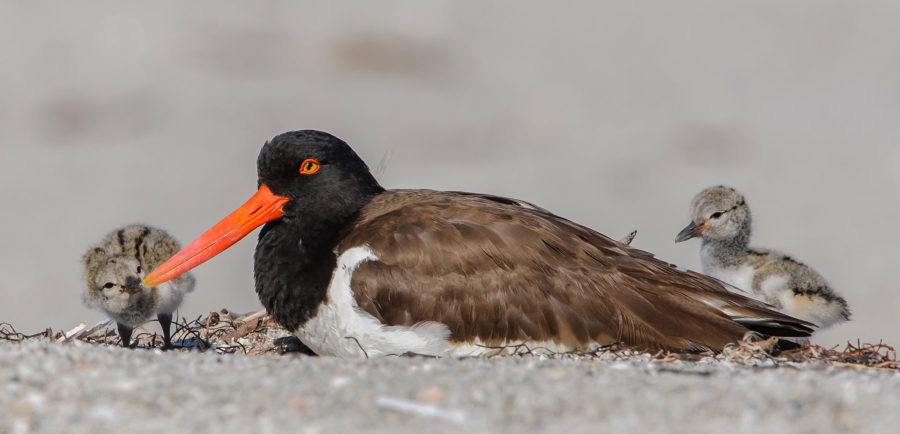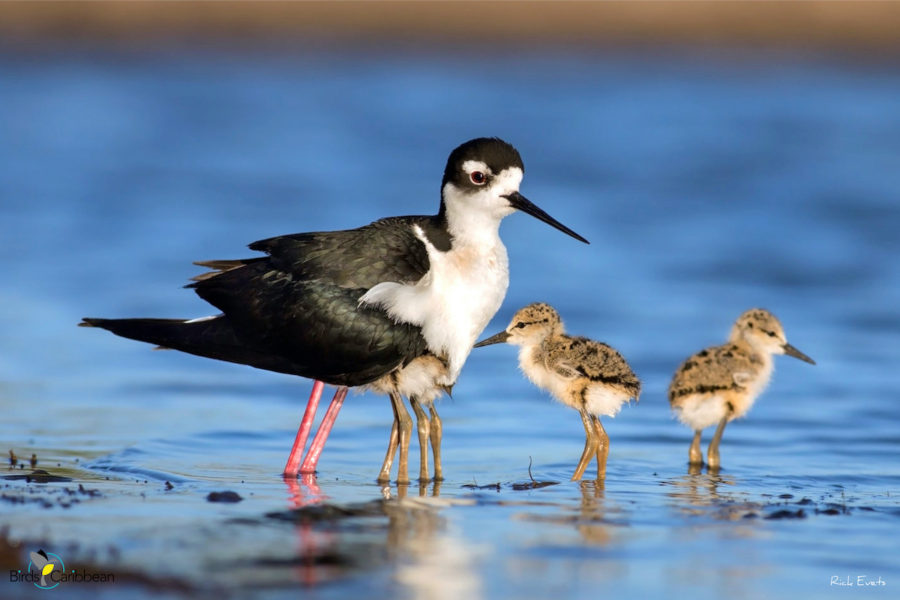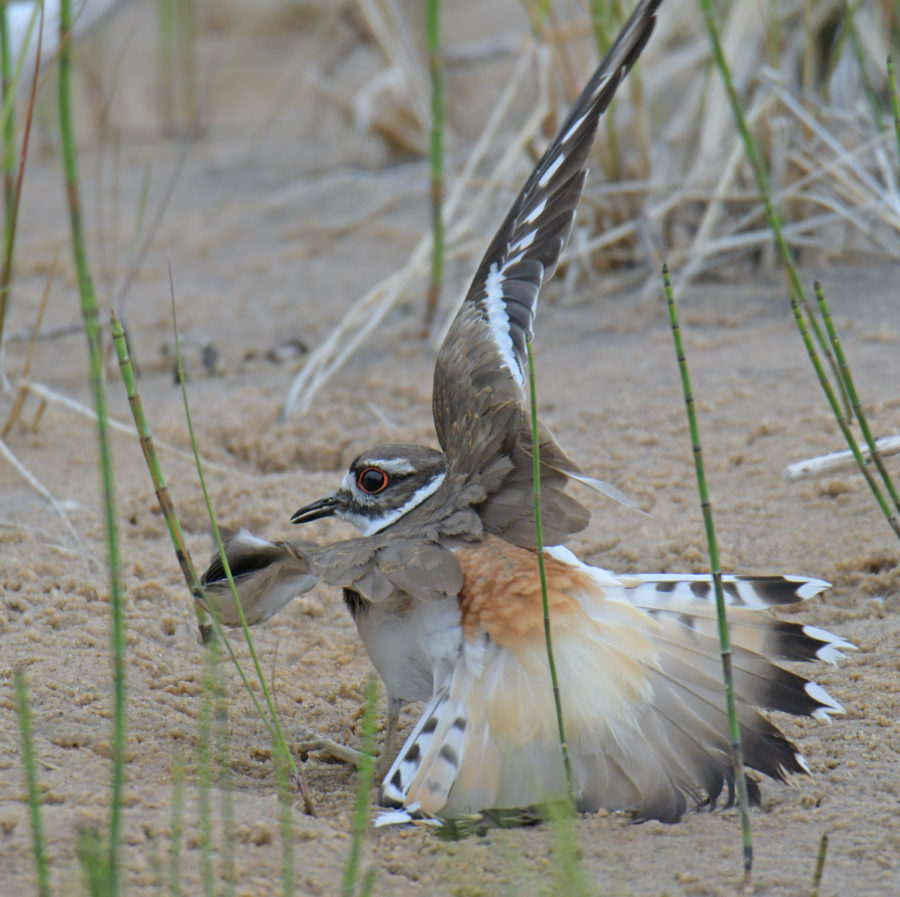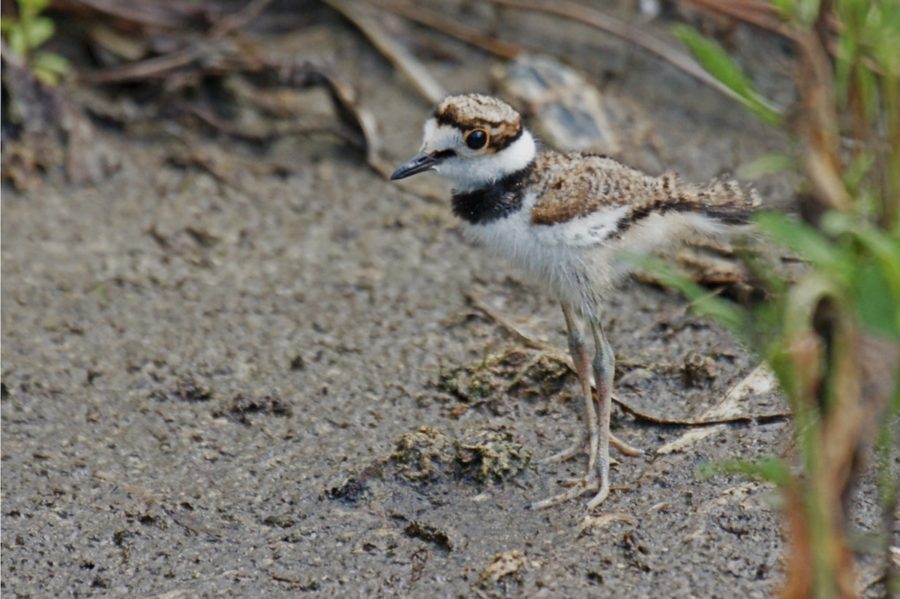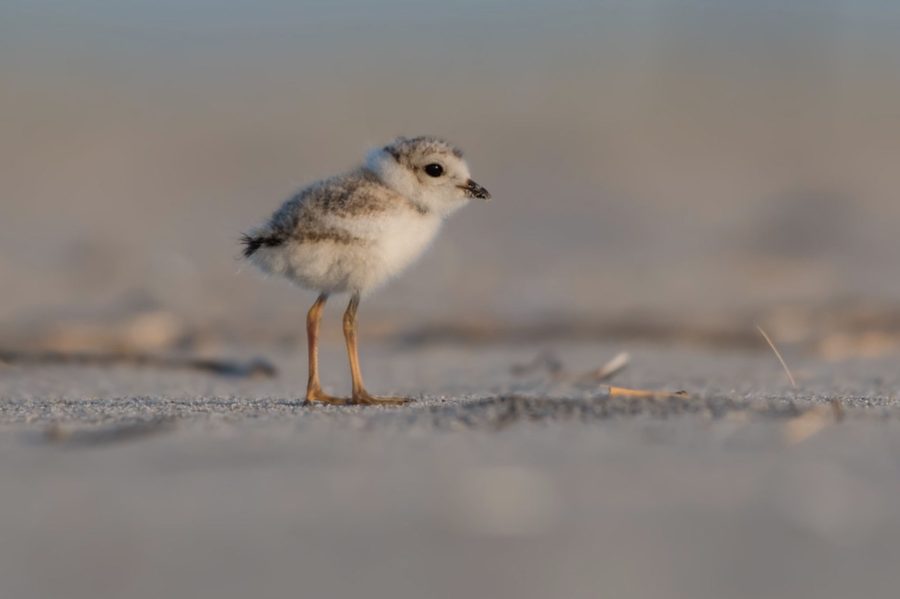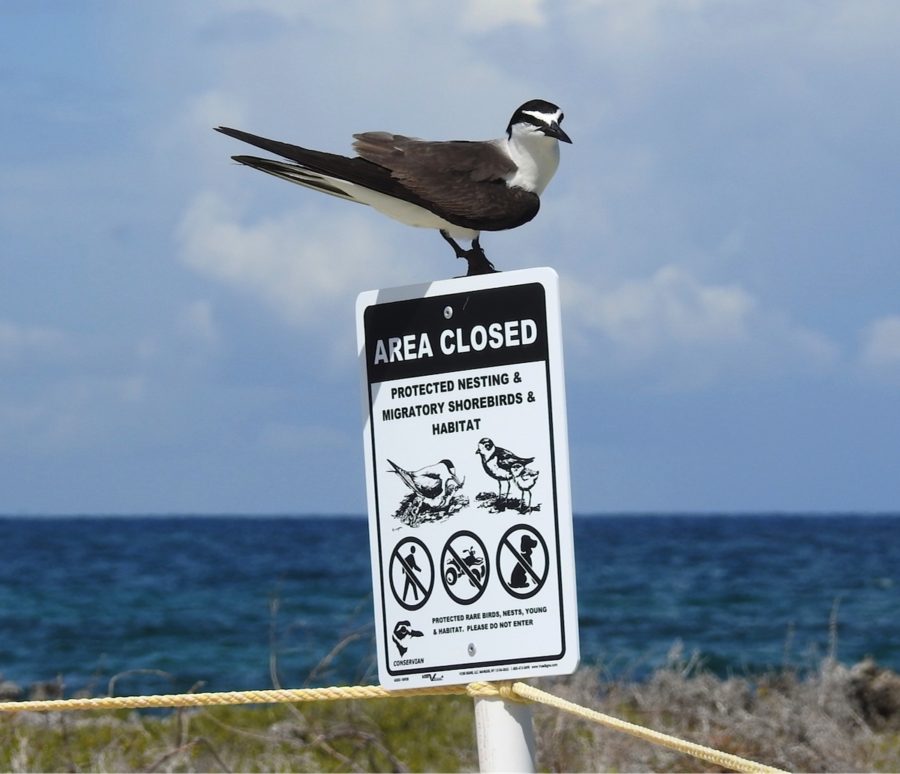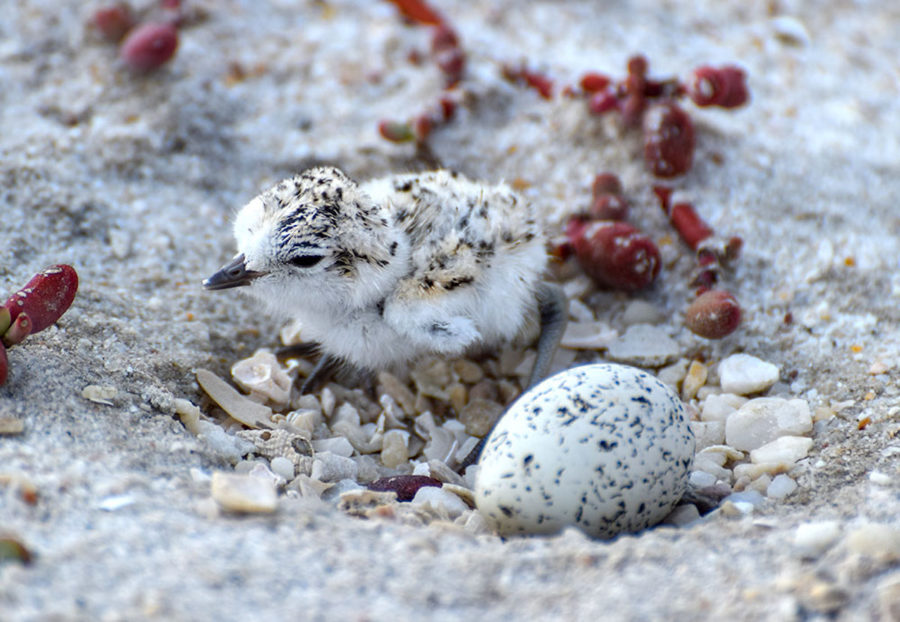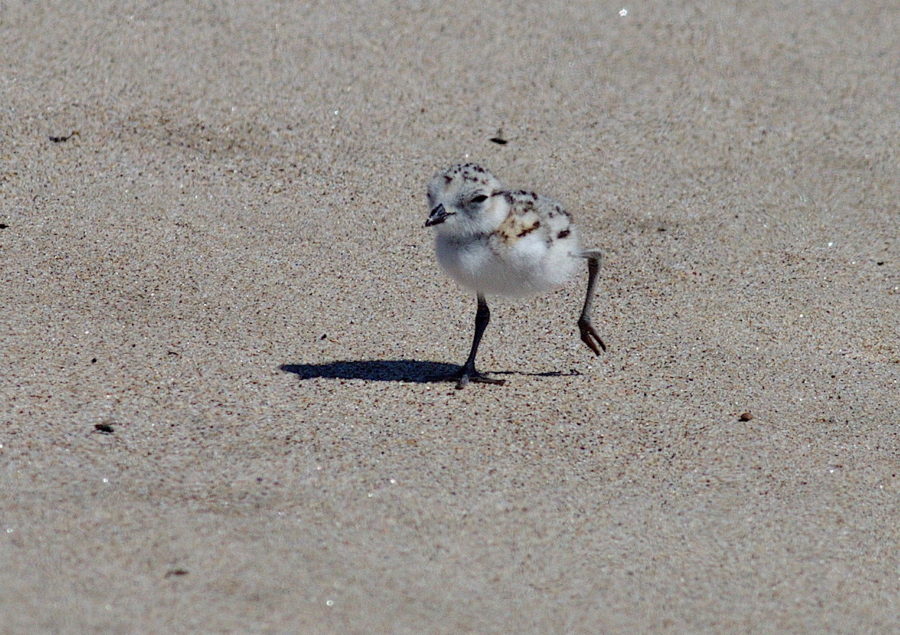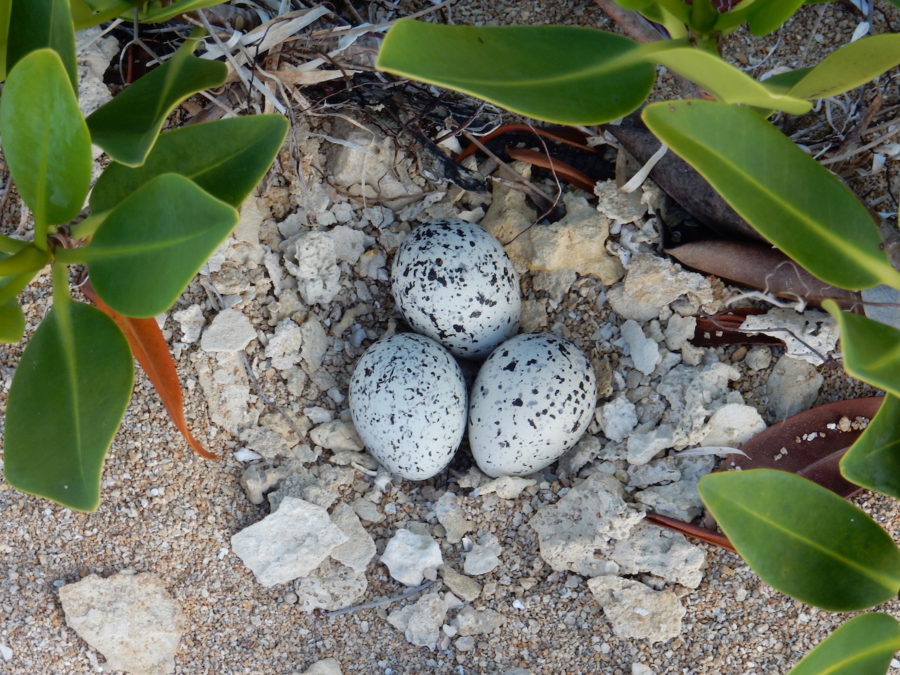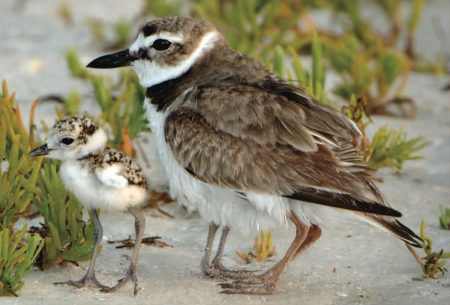
It’s beach season! That means vacationers, boaters, photographers, and beach-lovers will be heading to the seashore to enjoy the water and beat the heat. But remember this is also the time when shorebirds are nesting and raising their adorably fluffy chicks. These shorebirds have travelled very long distances and we want to reduce the additional challenges that they face upon reaching our shores.
Eggs and chicks are at risk of being crushed or trampled over because these fluffy little beach bumblers have a knack for blending in. You will definitely want to double or even triple check where you set down your beach chairs, umbrellas, bags, and coolers. Vulnerable young birds and adults can be stressed or killed by predators when they are flushed from their areas. Some adult birds may abandon their nests altogether!
Here are some easy tips for sharing the shore with shorebirds this summer and making your trip more enjoyable:
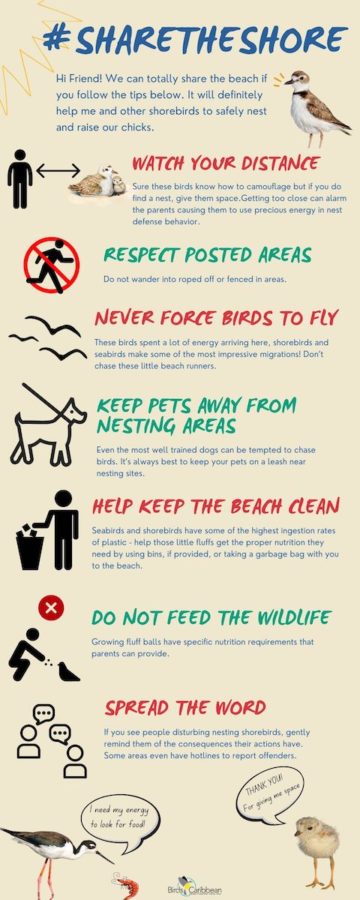 Watch your distance. Sure these birds know how to camouflage but if you do find a nest, give them space, at least 100 feet. Getting too close can alarm the parents causing them to use precious energy in nest defense behavior that would have been used to forage for food. Some parents will do a broken wing display – where they may appear injured by dragging their wing along the ground. If you see this, the bird is likely fine and just trying to distract you from a nearby nest! Walk away and give these birds space.
Watch your distance. Sure these birds know how to camouflage but if you do find a nest, give them space, at least 100 feet. Getting too close can alarm the parents causing them to use precious energy in nest defense behavior that would have been used to forage for food. Some parents will do a broken wing display – where they may appear injured by dragging their wing along the ground. If you see this, the bird is likely fine and just trying to distract you from a nearby nest! Walk away and give these birds space.
- Respect posted areas. Do not wander into roped-off or fenced-in areas where birds are nesting.
- Never force birds to fly! These birds spent a lot of energy arriving here—shorebirds and seabirds make some of the most impressive migrations! Don’t chase these little beach runners.
- Keep pets away from nesting areas. Even the most well trained dogs can be tempted to chase birds. They also do not know that these birds need space to comfortably nest. It is therefore always best to keep your pets on a leash near nesting sites.
- Help keep the beach clean. Seabirds and shorebirds have some of the highest ingestion rates of plastic – help those little fluffs get the proper nutrition they need by using bins, if provided, or taking a garbage bag with you to the beach.
- Do not feed the wildlife. Growing fluff balls have specific nutrition requirements that only parents can provide.
- Spread the word! If you see people disturbing nesting shorebirds, gently remind them that shorebirds’ survival depends on our actions. Some areas even have hotlines to report offenders.
Together we can share the beach and give shorebirds and their adorable growing fluffs the best chance of survival!
Here is an infographic that you can use to encourage others to #ShareTheShore this beach season:
Don’t forget to tag @BirdsCaribbean if you share it with your social media followers.
And here’s a link to our Snowy Plover Colouring Book in English and Spanish that educates about these beach-nesting plovers.
There will be many different species nesting on the shores, but they have similar behaviors and reactions to being disturbed. Here are some notable shore-nesting birds in the Caribbean and the US.

